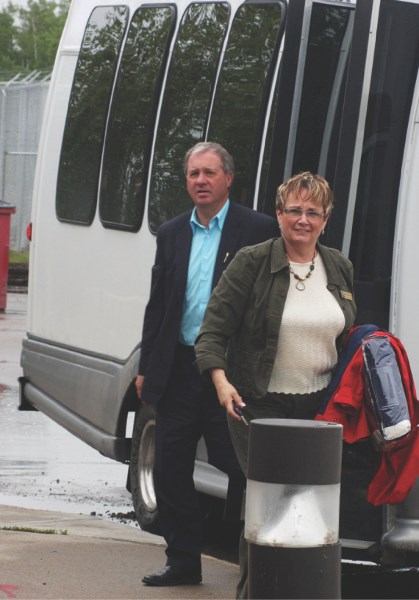Alberta Energy Minister Ron Liepert wasn't in promise-making mode when he visited the Cold Lake oilsands on Friday, but acknowledged there's "some validation" to the contention this region sits in the shadow of Fort McMurray.
Speaking to reporters outside the 4 Wing air terminal in Cold Lake, Liepert said he was impressed with what he saw in this region, but acknowledged "some other constituencies may have suffered" — unintentionally — for infrastructure funding because of the province's needed focus on the lack of infrastructure in the world's oilsands capital.
"...There was so much emphasis and focus on ensuring that the infrastructure was in place in Fort McMurray specifically that, whether it's the Peace region or whether it's Bonnyville-Cold Lake — and I think there's probably others you could put in there — it's probably time to address those needs," Liepert said.
Liepert said he doesn't share the view this area is a mini Fort McMurray, in part because its communities have been around much longer, and have been better able to handle more moderate growth.
"The Bonnyville-Cold Lake area had established communities here, and I would say very good infrastructure. Fort McMurray had limited (amounts) of anything, and so we had to address those needs, but at the same time, there's been tremendous growth here, too, and probably some of the infrastructure hasn't kept up with growth," Liepert said.
The minister said he heard about the sometimes-congested intersection of Highway 55 and Secondary Highway 892 — a key access point to oilsands development — during his trip, and while he noted he's not the transportation minister, he was quite prepared to share his thoughts on the issue with Transportation Minister Luc Ouellette.
The energy minister's quick stop came at his request because he was already booked to return to his riding in Calgary from a longer visit to Fort McMurray.
It was welcomed by both Cold Lake Mayor Craig Copeland and Bonnyville-Cold Lake Conservative MLA Genia Leskiw, who accompanied Liepert on his short visit here.
Leskiw said Imperial's operations were chosen because of their proximity to the airport and the minister's tight timelines. He had been interested in checking out Cenovus Energy's Foster Creek project, which is in the midst of an expansion. Imperial already has an approved plan for its Nabiye phase, but is still looking at changes to it. It has said in the past that construction on Nabiye — and an additional 30,000 barrels of bitumen each day — could start as early as 2010.
Leskiw noted close to a dozen MLAs have visited the Cold Lake area oilsands in the past year, including ministers, and that educating her colleagues about the significance of the region to energy production, and the "very limited footprint on the environment" that results from local extraction methods is important.
"...We want that message to get across, and we'll do one politician at a time and educate them about the oilsands, the Cold Lake oilsands," Leskiw said.
Copeland said Liepert, who has only been energy minister since January, appreciated a first-hand look at Imperial's facilities. The two men also talked about Cold Lake's concerns that it and other urban municipalities in resource development areas need help financially to deal with greater infrastructure demands that result from resource development.
"Your mayor had a couple of suggestions and wanted to know if I was open to looking at those, and I will be, if he wants to bring them forward," Liepert said.
Copeland told reporters the example of northeast B.C. is something Cold Lake council wants to draw attention to. The regional district in northeast B.C.'s Peace River country has access to some of the resource royalty revenue from that province — and it distributes that among area towns and cities under what's known as a "fair share" agreement.
"Some of the royalties are given back to urban municipalities to deal with their infrastructure problems that are associated with growth, so council's looking at that as a possibility and something to work with, so it's just a matter of putting (together) some kind of a proposal over time for the province to look at," Copeland said.
He said the minister understands the argument from small urban municipalities.
"I think he recognizes that there needs to be a better balance. How you achieve that is really a dilemma for the PC party," Copeland said.
"We need more urban MLAs to stand up and recognize there needs to be an equalization across the province."
According to a B.C. government press release, the program cited by Copeland is pumping about $31 million into Peace River Regional District under the latest phase of the program, which has generated $152 million in help for the area since 2005.



